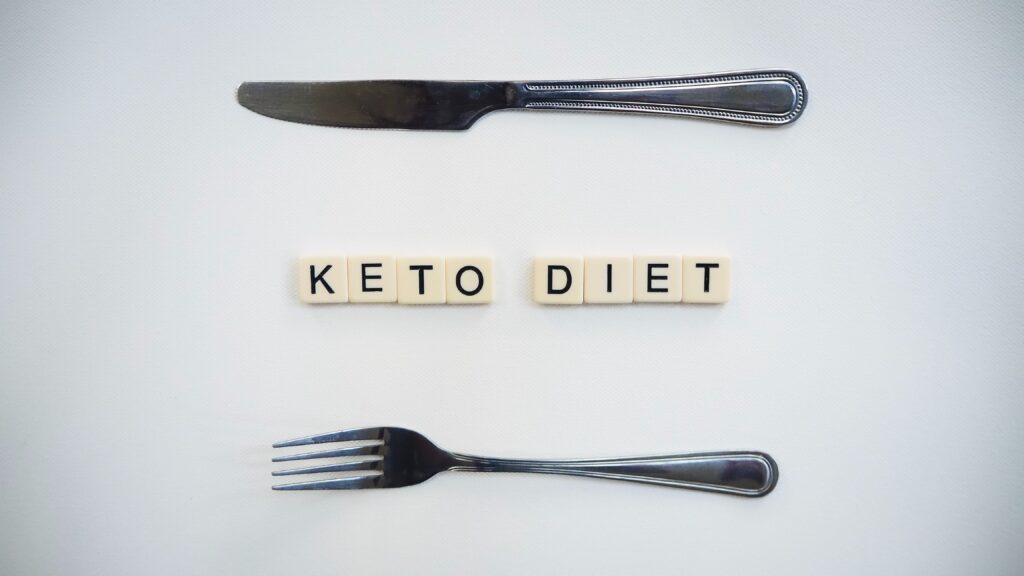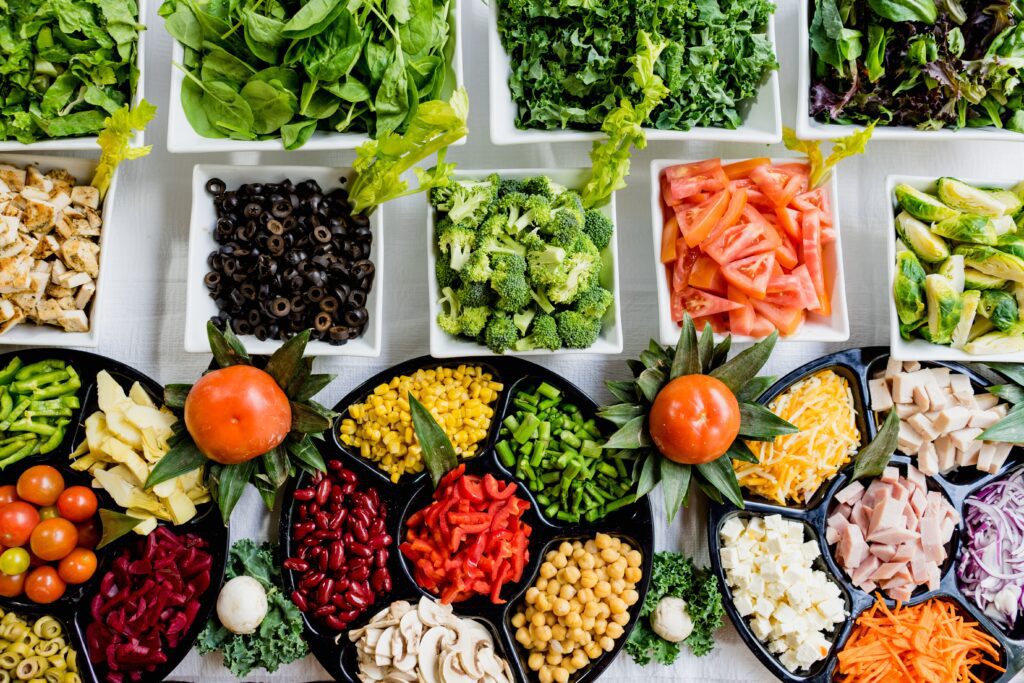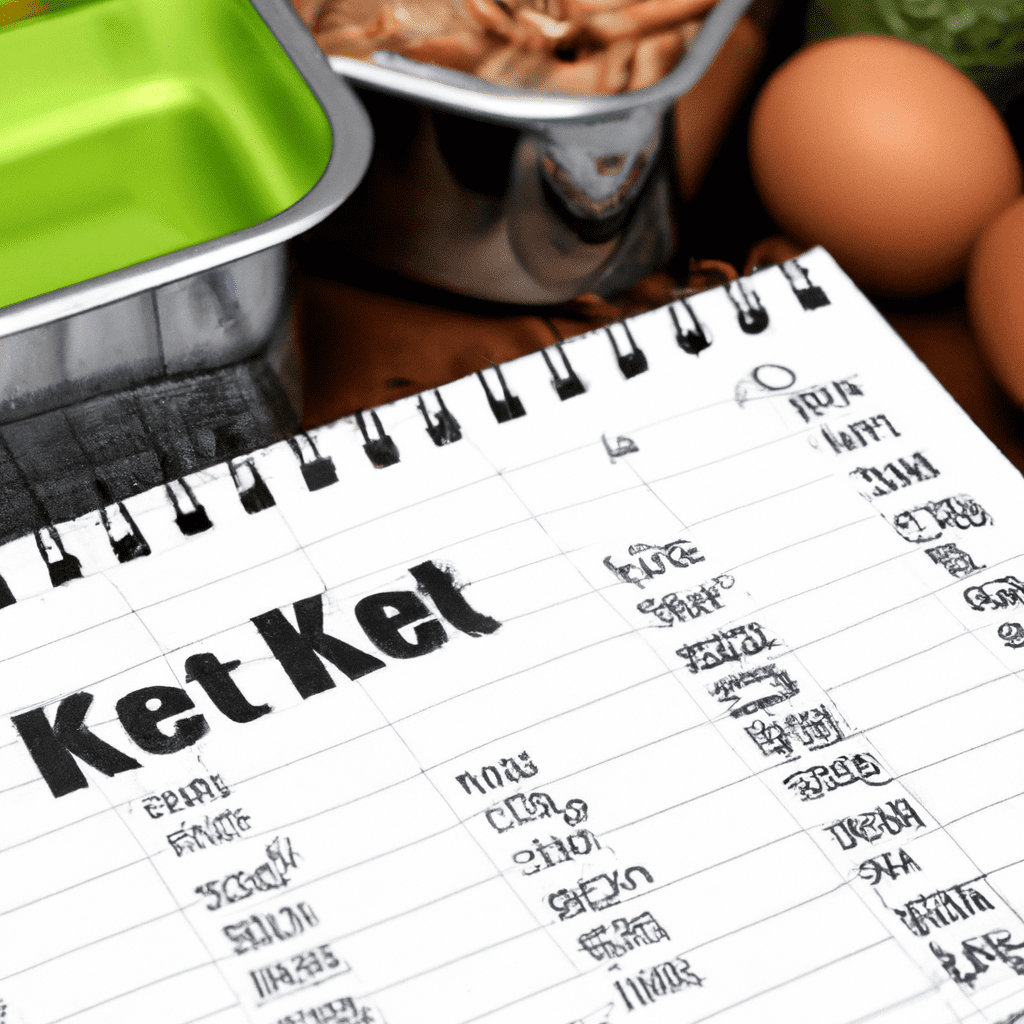

Are you tired of trying out various diets only to be left disappointed with the lack of results? Look no further, because we have the ultimate solution for you – the Keto Diet! This captivating diet has taken the weight loss world by storm, and for good reason.
By drastically reducing your carbohydrate intake and increasing your consumption of healthy fats, the Keto Diet puts your body into a state of ketosis, where it starts burning fat for fuel instead of glucose. Say goodbye to those stubborn pounds and say hello to a slimmer, healthier you with the Keto Diet!
What Is a Keto Diet?
Definition of a Keto Diet
A keto diet, short for ketogenic diet, is a low-carbohydrate, high-fat diet that has gained popularity for its potential weight loss benefits.
The main principle behind a keto diet is to shift the body’s primary source of fuel from carbohydrates to fat, resulting in a state of ketosis. In ketosis, the body produces ketones from fat stores and uses them as an energy source instead of relying on glucose from carbohydrates.
How It Works
The keto diet works by drastically reducing carbohydrate intake and replacing it with fats. When carbohydrates are limited, the body turns to stored fat for energy, breaking it down into ketones through a process called ketogenesis.
These ketones are then utilized by the body as an alternative fuel source. By consistently following a keto diet, individuals can achieve and maintain a state of ketosis, where the body becomes highly efficient at burning fat for energy.
Main Components
The main components of a keto diet include low-carbohydrate foods, moderate protein intake, and high-fat consumption. The typical macronutrient breakdown for a keto diet is approximately 70-75% of calories from fat, 20-25% from protein, and 5-10% from carbohydrates. This ratio helps to induce and maintain ketosis while providing adequate protein for muscle maintenance and repair.
Benefits of a Keto Diet for Weight Loss
Accelerated Fat Loss
One of the key benefits of a keto diet for weight loss is its ability to promote accelerated fat loss. When the body is in ketosis, it becomes highly efficient at using fat as a fuel source. By restricting carbohydrates, the body is forced to tap into its fat stores for energy, leading to significant weight loss.
Reduced Hunger and Increased Satiety
Another advantage of a keto diet is the reduction in hunger and increase in satiety. Unlike high-carbohydrate diets that can lead to spikes and crashes in blood sugar levels, a ketogenic diet stabilizes blood sugar and insulin levels, which can help to control cravings and hunger pangs.
The high-fat content of the diet also provides a feeling of fullness, making it easier to stick to a calorie deficit and avoid overeating.
Preservation of Muscle Mass
While following a low-calorie diet can lead to muscle loss, a keto diet focuses on preserving muscle mass. Adequate protein intake and the production of ketones help to spare muscle tissue from being broken down for energy.
This is especially beneficial for individuals who engage in resistance training or other forms of exercise to build and maintain muscle.
Improved Insulin Sensitivity
Insulin resistance is a common issue among individuals who are overweight or have metabolic conditions such as type 2 diabetes. The ketogenic diet has been shown to improve insulin sensitivity, meaning the body can effectively utilize insulin to regulate blood sugar levels.
Improved insulin sensitivity can not only aid in weight loss but also reduce the risk of developing chronic diseases.
Increased Energy Levels


Many people report increased energy levels and improved mental clarity when following a keto diet. This can be attributed to the fact that the body is efficiently burning fat for fuel, providing a steady and sustained source of energy. Additionally, stable blood sugar levels help to prevent energy crashes often associated with high-carbohydrate diets.
Drawbacks and Considerations
Initial Side Effects
When starting a keto diet, some individuals may experience initial side effects known as the “keto flu.” These symptoms can include fatigue, headache, dizziness, nausea, and irritability.
These side effects are often temporary and can be minimized by gradually reducing carbohydrate intake and ensuring adequate hydration and electrolyte balance.
Restrictive Nature
One consideration of the keto diet is its restrictive nature. Carbohydrates are found in many foods that are commonly consumed, such as grains, fruits, and starchy vegetables.
Following a keto diet requires careful meal planning and avoidance of many convenience foods. This may make it challenging for some individuals to adhere to the diet long-term.
Nutrient Deficiencies
Eliminating or severely restricting certain food groups, such as fruits, whole grains, and legumes, can lead to potential nutrient deficiencies. These foods provide essential vitamins, minerals, and fiber that are important for overall health.
To mitigate this risk, it is crucial to consume a diverse range of low-carbohydrate foods and consider appropriate supplementation if necessary.
Sustainability and Long-Term Effects
The long-term sustainability of a keto diet is a consideration for individuals looking to lose weight and maintain their results. While short-term studies show positive weight loss outcomes, more research is needed to determine the long-term effects of a keto diet on overall health and weight maintenance.
It is important to consult with a healthcare professional before embarking on any long-term dietary changes.
Individual Variations and Health Conditions
It is important to note that the keto diet may not be suitable for everyone. Certain health conditions, such as pancreatitis or liver disease, may be contraindicated for following a high-fat diet.
Individuals with a history of disordered eating or those who are pregnant or breastfeeding should exercise caution and consult with a healthcare professional before starting a keto diet.
Getting Started with a Keto Diet
Calculating Macronutrient Ratios
To get started with a keto diet, it is essential to calculate the appropriate macronutrient ratios based on individual goals and body composition. Online calculators and healthcare professionals can help determine the right balance of fat, protein, and carbohydrates to induce ketosis while maintaining nutritional needs.
Food Choices and Meal Planning
Choosing the right foods and planning meals is crucial when following a keto diet. It is important to focus on low-carbohydrate, high-fat options such as avocados, nuts, seeds, fatty fish, and healthy oils.
Incorporating a variety of vegetables and quality protein sources is also key. Meal prepping and planning can help ensure adherence to the diet and make it easier to stick to the appropriate macronutrient ratios.
Managing Electrolytes and Hydration
When transitioning to a keto diet, the body excretes more water and electrolytes, leading to potential imbalances. It is important to maintain adequate hydration by drinking water throughout the day and considering electrolyte-rich foods or supplements. Sodium, potassium, and magnesium are especially important electrolytes to monitor and replenish.
Possible Supplementation


Depending on individual needs and dietary choices, supplementation may be necessary on a keto diet. Common supplements include omega-3 fatty acids (fish oil), vitamin D, B vitamins, and electrolyte replacements.
It is important to consult with a healthcare professional or registered dietitian before starting any supplementation regimen.
How to Achieve Ketosis
Reducing Carbohydrate Intake
To achieve ketosis, it is necessary to significantly reduce carbohydrate intake. This typically means limiting foods such as bread, pasta, rice, sugary snacks, and most fruits. Instead, focus on consuming non-starchy vegetables, nuts, and seeds as primary sources of carbohydrates.
Increasing Healthy Fat Consumption
To enter ketosis, it is crucial to increase fat consumption significantly. Healthy fat sources include avocados, olive oil, coconut oil, fatty fish, nuts, and seeds. Fat should make up the majority of daily caloric intake, providing the body with ample fuel for energy and sustaining ketosis.
Moderate Protein Intake
Protein intake should be moderate on a keto diet. Consuming too much protein can potentially hinder ketosis, as excess protein can be converted to glucose through a process called gluconeogenesis.
Adequate protein intake is important for muscle maintenance and repair, but it should be balanced with fat intake to sustain ketosis.
Intermittent Fasting
Intermittent fasting, or restricting eating to specific time windows, can help accelerate the onset of ketosis and enhance fat burning. This eating pattern can be combined with a keto diet to further optimize weight loss and metabolic benefits.
However, it is crucial to listen to the body’s hunger cues and make adjustments as needed to ensure adequate nutrition and energy levels.
Foods to Eat on a Keto Diet
Healthy Fats
Healthy fats are a staple of the keto diet. Avocados, olive oil, coconut oil, butter, ghee, and fatty fish (such as salmon and mackerel) are excellent sources of healthy fats. These fats not only provide energy but also support brain health and satiety.
Low-Carb Vegetables
Non-starchy vegetables are low in carbohydrates and rich in essential nutrients and fiber. Leafy greens, cauliflower, broccoli, zucchini, asparagus, and bell peppers are all great options for including in a keto diet. They provide important vitamins and minerals while keeping carbohydrate intake in check.
Quality Proteins
Choosing quality protein sources is important on a keto diet. Opt for grass-fed beef, pasture-raised poultry, wild-caught fish, and organic eggs. These protein sources not only provide essential amino acids but also contain beneficial fats.
Nuts and Seeds
Nuts and seeds are excellent snack options on a keto diet. Options like almonds, walnuts, chia seeds, flaxseeds, and hemp seeds are low in carbohydrates and high in healthy fats and fiber. They can help to keep hunger at bay and provide essential nutrients.
Dairy Products
Dairy products can be included on a keto diet, but it is important to choose full-fat or high-fat options. Greek yogurt, cheese, and heavy cream are good choices. However, individuals with lactose intolerance or dairy allergies should avoid dairy products or opt for lactose-free alternatives.
Beverages


Water should be the primary beverage choice on a keto diet, as it is essential for staying hydrated. Herbal teas, black coffee (without added sugar or milk), and unsweetened nut milk are also suitable options. It is important to avoid sugary beverages, fruit juices, and most alcoholic drinks, as they can derail ketosis and hinder weight loss efforts.
Foods to Avoid on a Keto Diet
Highly Processed Foods
Highly processed foods are typically high in refined carbohydrates, unhealthy fats, and added sugars. These include items such as cookies, cakes, pastries, chips, and fast food. These foods not only promote weight gain but also increase the risk of chronic diseases.
Sugar and Sweeteners
Sugar is a major contributor to weight gain and metabolic issues. It is crucial to eliminate or limit sugar and artificial sweeteners when following a keto diet. Avoid sugary drinks, candies, desserts, and other foods with added sugars. Instead, opt for natural sweeteners like stevia or monk fruit if necessary.
Grains and Starches
Grains, including wheat, rice, corn, oats, and barley, are high in carbohydrates and should be avoided on a keto diet. Starchy vegetables like potatoes, parsnips, and peas should also be limited or avoided. These foods can spike blood sugar levels and hinder the body’s ability to stay in ketosis.
Legumes and Beans
While legumes and beans are a good source of plant-based protein and fiber, they are higher in carbohydrates and not suitable for a keto diet. Lentils, chickpeas, black beans, and kidney beans should be restricted to maintain ketosis and promote weight loss.
Fruits (in moderation)
Although fruits are generally healthy, most are high in natural sugars and carbohydrates. It is important to limit fruit intake to those lower in sugar and consume them in moderation. Berries, such as strawberries, blueberries, and raspberries, are the best choices as they contain fewer carbohydrates.
Certain Sauces and Condiments
Some sauces and condiments contain hidden sugars and unhealthy fats, making them unsuitable for a keto diet.
Ketchup, barbecue sauce, honey mustard, and most salad dressings should be avoided. Instead, opt for homemade dressings using healthy oils and vinegar, or choose low-carb and sugar-free options.
Tips for Success on a Keto Diet
Meal Prepping and Planning
Meal prepping and planning are essential for success on a keto diet. This involves preparing meals and snacks in advance to minimize the reliance on convenience foods or making impulsive food choices. By having keto-friendly meals readily available, it becomes easier to adhere to the diet and stay in ketosis.
Tracking Macronutrients and Calories
Tracking macronutrients and calories can help ensure proper adherence to the keto diet. Various mobile apps and websites offer tools to track food intake and calculate macronutrient ratios.
This can be especially helpful for those starting a keto diet and wanting to monitor their carbohydrate, fat, and protein intake accurately.
Staying Hydrated
Proper hydration is crucial for overall health and success on a keto diet. Drinking adequate water throughout the day helps to prevent dehydration and supports optimal bodily function.
Monitoring urine color and frequency can serve as indicators of hydration levels, with clear or light-yellow urine being an ideal goal.
Incorporating Physical Activity
Physical activity is an important component of a healthy lifestyle and can complement a keto diet. Engaging in regular exercise can enhance weight loss efforts, improve insulin sensitivity, and promote overall well-being.
It is essential to choose physical activities that align with individual fitness levels and goals.
Managing Electrolytes
As mentioned earlier, transitioning to a keto diet may result in electrolyte imbalances due to increased water excretion. It is important to monitor electrolyte levels and include sufficient sodium, potassium, and magnesium in the diet. Electrolyte-rich foods and supplements can help prevent symptoms like muscle cramps or fatigue.
Seeking Professional Guidance


For individuals with specific health concerns or those who are new to the keto diet, seeking guidance from healthcare professionals or registered dietitians is advisable. They can provide personalized recommendations, address potential risks or concerns, and ensure the diet is appropriate and sustainable for individual needs.
Potential Risks and Side Effects
Keto Flu
The keto flu is a common side effect when starting a keto diet. It typically occurs in the first few days or weeks and is characterized by symptoms such as fatigue, headache, nausea, and irritability.
These symptoms are often temporary and can be minimized by gradual carbohydrate reduction, electrolyte management, and ensuring adequate hydration.
Gastrointestinal Issues
Some individuals may experience gastrointestinal issues, such as constipation or diarrhea, when following a keto diet. This can be attributed to changes in food intake, fiber intake, and inadequate hydration. Ensuring adequate fiber intake from non-starchy vegetables and staying hydrated can help alleviate these symptoms.
Potential Nutrient Deficiencies
Eliminating certain food groups on a keto diet can lead to potential nutrient deficiencies if not properly managed.
It is important to prioritize nutrient-dense foods, consider appropriate supplementation, and regularly monitor nutrient levels through bloodwork. A balanced and varied approach to food choices can help mitigate the risk of nutrient deficiencies.
Increased Cholesterol Levels
While a keto diet can lead to improvements in lipid profiles for many individuals, some may experience a temporary increase in cholesterol levels. This increase is typically due to an increase in LDL cholesterol, often referred to as “bad” cholesterol.
However, it is important to note that the overall cholesterol profile (including HDL, LDL, and triglycerides) should be assessed rather than focusing solely on LDL levels.
Negative Impact on Athletic Performance
Athletes who engage in high-intensity or endurance activities may experience a decline in performance when first transitioning to a keto diet. This is because the body is adapting to using fat as the primary fuel source, and performance may temporarily suffer during this adjustment period.
However, once the body becomes fat-adapted, performance can improve, especially for endurance activities.
Conclusion


In conclusion, a keto diet can be an effective approach to weight loss for many individuals. By restricting carbohydrates and focusing on high-fat consumption, the body enters a state of ketosis, where it efficiently burns fat for fuel.
The benefits of a keto diet for weight loss include accelerated fat loss, reduced hunger, preservation of muscle mass, improved insulin sensitivity, and increased energy levels.
However, it is important to consider the potential drawbacks and individual variations when embarking on a keto diet. Side effects such as the keto flu and gastrointestinal issues may occur initially, and the restrictive nature of the diet can make it challenging to sustain long-term. Nutrient deficiencies, sustainability, and individual health conditions should also be taken into account.
Getting started with a keto diet involves calculating macronutrient ratios, choosing appropriate foods, managing electrolytes and hydration, and considering supplementation if necessary.
Achieving and maintaining ketosis requires reducing carbohydrate intake, increasing healthy fat consumption, moderating protein intake, and potentially incorporating intermittent fasting.
Foods to eat on a keto diet include healthy fats, low-carb vegetables, quality proteins, nuts and seeds, and certain dairy products. Conversely, highly processed foods, sugar, grains, legumes, certain fruits, and certain sauces and condiments should be avoided.
Tips for success on a keto diet include meal prepping, tracking macronutrients and calories, staying hydrated, incorporating physical activity, managing electrolytes, and seeking professional guidance when needed.
Potential risks and side effects may include the keto flu, gastrointestinal issues, nutrient deficiencies, increased cholesterol levels, and negative impact on athletic performance.
However, these risks can be managed through gradual adaptation, proper hydration, balanced food choices, monitoring nutrient levels, and allowing the body time to adjust.
In conclusion, a keto diet can be an effective tool for weight loss when approached with care and personalized to individual needs. By understanding the principles, benefits, considerations, and strategies involved, individuals can make informed decisions regarding their weight loss journey and overall health. Personalization, monitoring, and adherence to healthy practices will ultimately determine the success and sustainability of a keto diet for weight loss.







